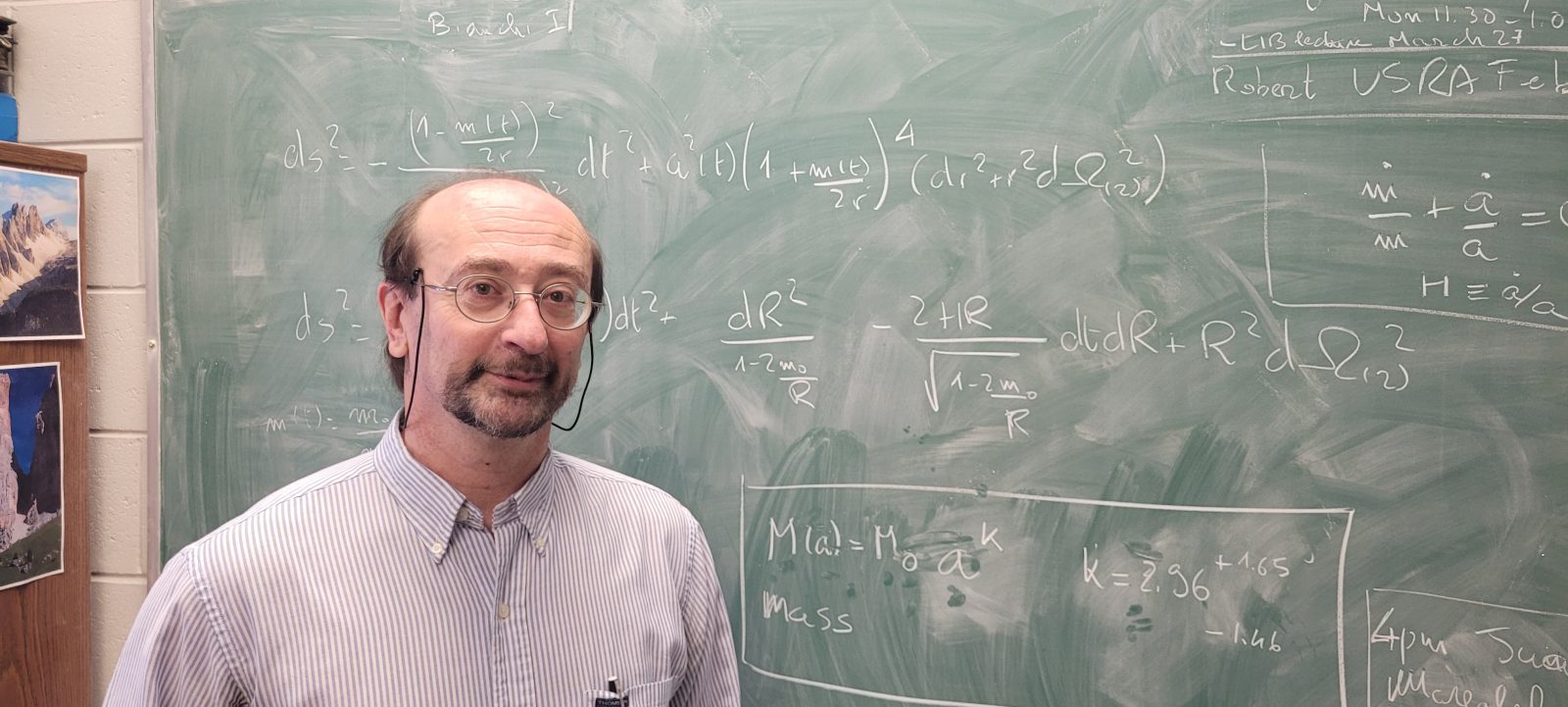By Lawrence Belanger
Local Journalism Initiative
Researchers across nine countries have uncovered the first evidence of “cosmological coupling,” a newly-predicted phenomenon in Einstein’s theory of gravity, possible only when black holes are placed inside an evolving universe. One of those researchers, Dr. Valerio Faraoni of Bishop’s University’s Department of Physics and Astronomy, sat down with The Record to explain just what all this means.
Based on their observations, “there are two main ideas,” explains Dr. Faraoni in his office. “First is that black holes are not isolated bodies but are in fact affected by the expansion of the universe.” Rather than isolated features of the universe, the expansion of the universe in size impacts the growth of black holes, the researchers believe.
“Second, is that these black holes might be the source of Dark Energy,” a speculated type of energy which is believed to be what causes the universe to expand.
“The question of the nature of Dark Energy is perhaps the most important puzzle in contemporary physics,” explains Faraoni. After establishing that the universe is expanding in 1998, it remained unknown where the energy for that expansion came from. “It’s 70 per cent of the energy of the universe. Any new and viable potential solution to the Dark Energy problem is going to look very weird at first and here we have observational evidence pointing to one.”
Faraoni was part of the team of 17 researchers that worked with the University of Hawaii to develop a description of black holes that agrees with these observations from the past decade. The team has recently published two papers, one in The Astrophysical Journal and the other in The Astrophysical Journal Letters, that studied supermassive black holes at the hearts of ancient and dormant galaxies.
(A dormant galaxy is a galaxy with “little activity”, says Faraoni. He mentions “red elliptical galaxies” as one such example. These galaxies do not form stars, and are considered dead or dormant.)
The first paper found that these black holes gain mass over billions of years in a way that can’t easily be explained by known methods, such as black hole mergers or the gradual accumulation of stellar gas. Furthermore, black holes across multiple galaxies all showed a similar trend of massive growth, according to Faraoni.
This indicates that these black holes could be the source of Dark Energy in the universe. The second paper finds this growth matches predictions about black holes that they not only cosmologically “couple,” but also enclose vacuum energy—material that results from squeezing matter as much as possible without breaking Einstein’s equations, which Faraoni dubs the “the master equations of general relativity”.
(The theory of general relativity states that gravity is the cause of the curvature of “spacetime”, which is itself impacted by mass and energy. For example, the faster your speed, the slower time passes for you.)
The paper shows that the combined vacuum energy of black holes produced in the deaths of the universe’s first stars agrees with the measured quantity of dark energy in our universe.
“We’re really saying two things at once: that there’s evidence the typical black hole solutions don’t work for you on a long, long timescale, and we have the first proposed astrophysical source for dark energy,” says Duncan Farrah, a University of Hawaii Astronomer and study architect in a press release provided by Bishop’s University. “What that means, though, is not that other people haven’t proposed sources for dark energy, but this is the first observational paper where we’re not adding anything new to the universe as a source for dark energy: black holes in Einstein’s theory of gravity are the dark energy.”
These new measurements, if supported by further evidence, redefine our understanding of what a black hole is.
“We need this data to be confirmed, and we need this theory to be developed more,” cautions Faraoni. “I think taking new datasets, maybe with different samples and better [technology] now [that] we got the James Webb telescope, will be helpful,” he posits.
He and the other researchers say their studies could provide a framework for theoretical physicists and astronomers to further test. “If Cosmological Coupling is confirmed, it would mean that black holes never entirely disconnect from our universe, that they continue to exert a major influence on the evolution of the universe into the distant future,” says University of Michigan professor and study co-author Gregory Tarlé in a quote from the press release.


